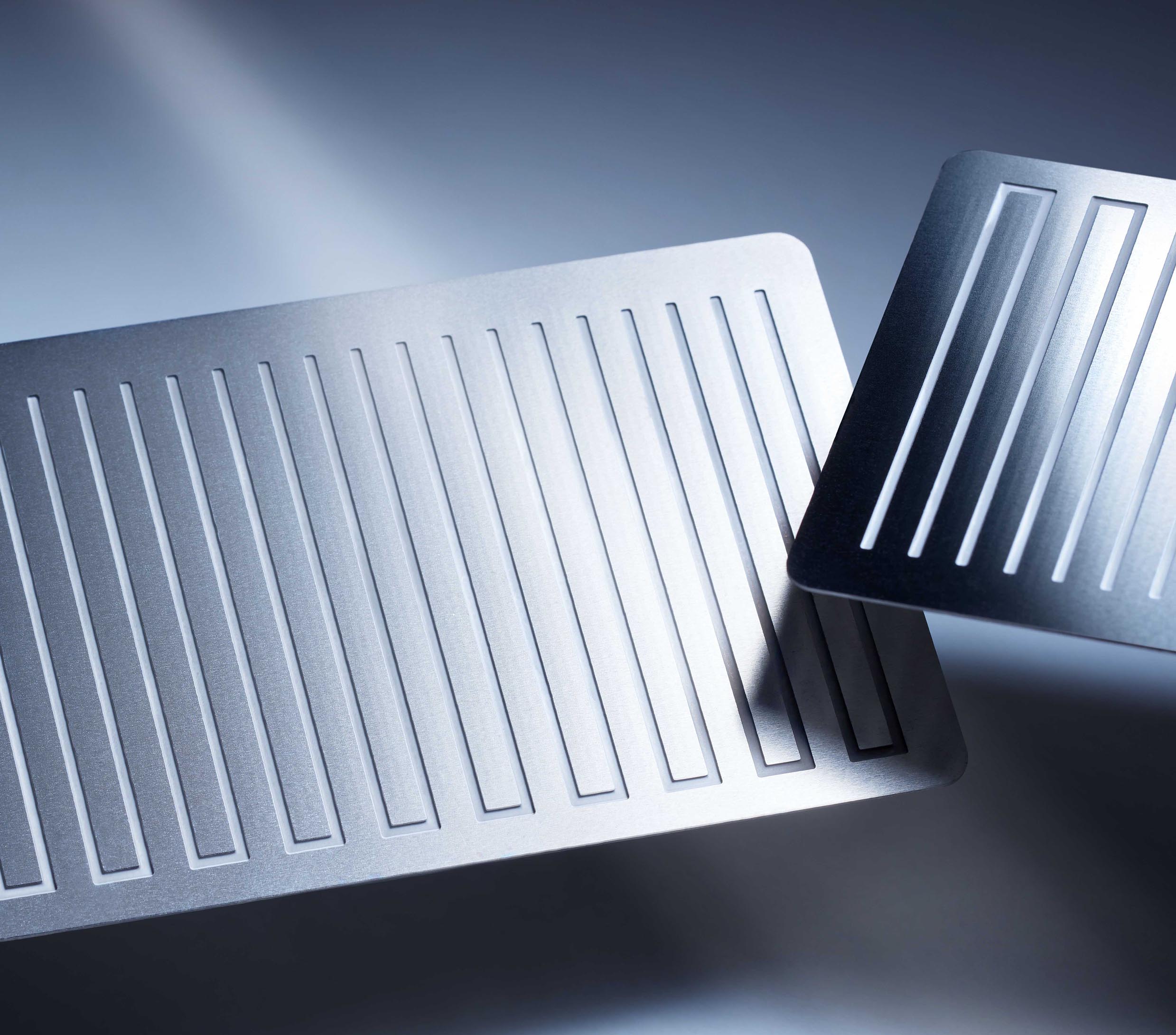Powering the Future: Photo Etching for Energy Generation and Storage
Discover the revolutionary applications of photo chemical etching in power generation and storage.
Photo Chemical Etching Process
Photo chemical etching is a highly precise manufacturing process that involves using a combination of chemical and light-based techniques to selectively remove material from a metal sheet or plate. This process allows for the creation of intricate and complex parts with tight tolerances and high accuracy.
After applying a UV light-sensitive photoresist material onto the metal surface, a pattern or design is then transferred onto the photoresist using a photomask or direct digital imaging. In developing, the unexposed resist is washed away, leaving bare metal exposed to the etching solution
At etching, we inundate the metal sheet in a chemical solution that dissolves the exposed areas of the metal. The remaining photoresist acts as a protective layer, preventing the underlying metal from being etched away. Once the desired depth of etching is achieved, the remaining photoresist is removed, and the etched metal part is ready for use.
Photo chemical etching offers several advantages over traditional machining methods. It allows for the production of complex parts with intricate geometries that would be difficult or impossible to achieve with conventional machining techniques. It also eliminates the need for expensive tooling and reduces material waste. Additionally, the etching process can be easily scaled up for mass production.
In the power generation industry, photo chemical etching is used to create various components, such as fuel cell plates, battery componets, heat exchangers, and electrical contacts. Its ability to produce intricate parts with high precision makes it an ideal manufacturing method for these applications.
Conquering Challenging Part Geometries with Photo Chemical Etching
One of the major advantages of photo chemical etching is its ability to conquer challenging part geometries, especially "all-over" designs such as partial depth channels in heat exchangers and thermal planes. Conventional machining addresses each feature serially, while etching addresses the entire surface at once. Photo chemical etching allows for the production of parts with tight tolerances and intricate features.
The process can easily accommodate the creation of parts with irregular shapes, fine details, and small features. This makes it ideal for manufacturing components used in power generation and storage, where the efficient use of space and precise functionality are crucial.
Whether it's creating intricate fuel cell plates with precise channels for efficient flow of reactants, or fabricating heat exchangers with complex fin patterns for enhanced heat transfer, photo chemical etching provides a versatile solution for conquering challenging part geometries.
By leveraging the capabilities of photo chemical etching, manufacturers in the power generation industry can overcome design limitations and create innovative solutions that maximize performance and efficiency.
Enhancing Energy Storage with Photo Chemical Etching
Photo chemical etching has many applications in energy storage systems. Etching high-performance battery components, such as current collectors and busbars, is among the more well-known uses of etching.
The etching process allows for the creation of intricate electrical contact patterns on the surface of the battery components. These patterns maximize the contact area between the battery electrodes and the current collectors, resulting in improved energy transfer and reduced resistance.
In addition to improving electrical performance, photo chemical etching can also be used to create microstructures on the surface of electrodes, enhancing their surface area. This increased surface area enables higher energy storage capacity and faster charging and discharging rates.
Photo chemical etching of energy storage components offers the power generation industry higher efficiency, longer battery life, and improved overall system performance.
Photo Chemical Etching Advanced Process Controls
Digital controls allow for more tightly controlled parameters, such as temperature, pressure, speed, and etchant efficiency that contribute to achieving higher precision and tighter tolerances.
Direct digital imaging enables manufacturers to create parts with even tighter tolerances and more precise geometries. Additionally, new materials and alloys can now be etched using specialized etchants, expanding the range of applications for photo chemical etching.
The continuous innovation in photo chemical etching technology opens up new possibilities for the power generation industry, enabling the development of more efficient and advanced energy generation and storage systems.
The Future of Energy Generation with Photo Chemical Etching
As the demand for clean and renewable energy sources continues to grow, the role of photo chemical etching in energy generation becomes increasingly important.
In the future, we can expect to see further advancements in photo chemical etching technology, enabling the manufacturing of even more efficient and cost-effective energy generation and storage systems.
By harnessing the power of photo chemical etching, the future of energy generation looks promising, with cleaner and more efficient solutions that can meet the world's growing energy needs.


